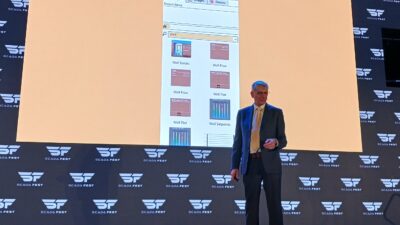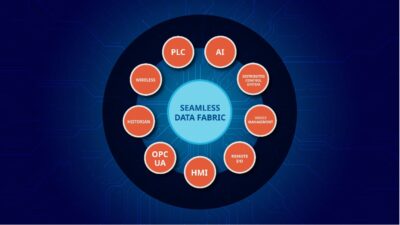Modern supervisory control and data acquisition (SCADA) solutions can offer actionable insight to allow for better monitoring and control of production processes.

SCADA insights
- Supervisory control and data acquisition (SCADA) systems can help ensure efficient and profitable operations and give users better insights on their data.
- In one example, Catania Oils, partnering with a system integrator, used a HMI/SCADA suite along with a plant data historian to improve overall equipment effectiveness (OEE) and key performance indicators (KPIs).
To succeed in the food processing sector, requires a balancing act of nuances between perishable ingredients, supply chains, production, quality control, and effective workflows along with proper reporting to ensure compliance with both government and customer requirements.
To ensure efficient and profitable operations, obtaining actionable insight into production is now imperative. One way to achieve this is by using supervisory control and data acquisition (SCADA) software in conjunction with human-machine interface (HMI) technology.
SCADA systems collect and analyze production data and deliver it to the accompanying HMIs for intuitive visualization of real-time performance. Together these technologies allow companies to better monitor and control production. Likewise, it can provide diagnostic and alarm capabilities which result in reduced downtime and waste.
With real-time performance data, companies can also adopt predictive and preventive maintenance capabilities which allows operations teams to make data-driven decisions about where and when maintenance should take place. It also offers improved traceability through the real-time tracking of production data. And, due to the nature of the food industry, it is essential to have operational flexibility and agility to ensure efficiency and scalability. This is especially important to help companies stay on top of the frequent changes that are common in this industry sector.
A good example of a food manufacturing company that has improved production through the use of real-time data insight driven by SCADA and HMI technology is Catania Oils.
Using SCADA and data to improve operations
Catania Oils is a manufacturer of non-GMO Project verified and organic oils for the ingredients, food service, and retail markets. The company needed help to utilize existing data to allow it to gain informational insight for plant-wide visualization into production. In particular, the company wanted to know the status of its lines – which lines are up and which lines are down.
It also wanted to better understand the quantity of resources being used and specifically to know the tank levels to be able to order raw materials based on the availability of storage space. Other requirements were to be able to identify potential efficiency gains in its manufacturing processes by investigating overall equipment effectiveness (OEE) and measuring key performance indicators (KPIs); to have the capability of batch management and material handling; to track the quantity of additives for regulatory purposes; and to monitor the quantity of products produced.
To achieve all of these goals, the company set out to find a solution that could capture data and generate meaningful displays to allow it to make data-driven decisions. Catania Oils went with a system integrator that chose to employ an web-based real-time HMI/SCADA suite along with a plant data historian. By using this technology, Catania Oils saw immediate benefits.
The company is now able to better monitor and control production, including OEE and loss deployment, to improve production efficiency. The key to improving operations was to focus the right resources on the actual problems and to use OEE for gaining insight.
As a metric, OEE provided a clear understanding of the difference between the quantity of sellable product that could be made versus the actual product that was made.
The company also made efficiency gains by monitoring loss deployment. The use of SCADA software has enabled Catania Oils to determine how much product has been made, the loss of efficiency attributed to the fault of a machine or asset, and the loss of efficiency attributed to the process around the asset. By monitoring both OEE and loss deployment, it has gained improved awareness into potential losses of efficiency. Using the production data collected by the SCADA system and displayed on the HMI system, the company has been able to focus on the entire process, as opposed to a single machine fault or quality defect, to capitalize on greater efficiency gains.
– This originally appeared on Control Engineering Europe’s website. Edited by Chris Vavra, web content manager, Control Engineering, CFE Media and Technology, [email protected].


